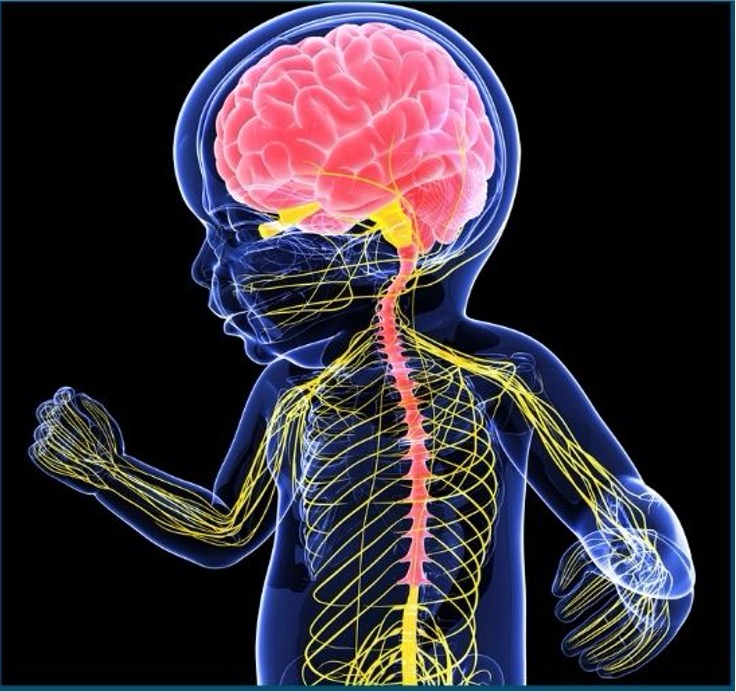
When a child exhibits behavioral challenges, tantrums, hyperactivity, trouble focusing, or sleep disturbances, the common approach is to label and manage symptoms. Many parents and educators are quick to attribute these challenges to psychological or environmental factors. But what if these behaviors are not simply psychological or personality-driven, but rather neurological in origin? While previously mentioned elements certainly play a role, growing evidence suggests that the nervous system plays a foundational, and often overlooked, role in shaping how children behave, respond, and interact with the world. Understanding the central role of the nervous system is key to decoding childhood behavior and helping children reach their full potential.
Understanding the Neurological Foundation
The nervous system serves as the master control center for the body. It processes sensory input, regulates physiological responses, and governs emotional regulation and motor control. When the nervous system is functioning optimally, children are more capable of adapting to their environment, focusing on tasks, managing their emotions, and communicating effectively. However, when stress or interference impacts this system, especially during key developmental windows, behavioral symptoms can emerge.
This interference can originate in the structural and functional development of the spine and cranium, beginning as early as birth. For instance, cranial or cervical subluxations resulting from birth trauma or prolonged in-utero positioning may affect the flow of cerebrospinal fluid or irritate key cranial nerves. The result is a child who may experience increased irritability, poor digestion, delayed milestones, or hypersensitivity to stimuli, Beall of which may manifest as behavioral issues.
Because these symptomatic issues are becoming more common and we are becoming used to hearing about children’s health challenges treating these issues as specific symptoms, without looking at the causative factors is becoming the acceptable norm. Hearing that the current rate of of neurodivergent children is said to be 15-20% (1-5), or that the Autism Spectrum Disorder numbers are 1-32 children (up from 1-150 in 2000), or that 54% of children in the U.S. have chronic health issues leads us to believe that this is normal. “Common does not mean normal,” behaviors such as difficulty concentrating, delayed milestones, poor emotional regulation, or persistent fatigue may stem from subtle underlying neurological imbalances. These can have a structural origin in the cranial, spinal, or dural meningeal systems caused subluxations (imbalances in the nervous system facilitated by structural compensatory patterns) that interfere with the body’s communication pathways. When the nervous system is compromised, a child’s ability to adapt to their environment, and regulate themselves can be significantly diminished.
The Impact of Structural Imbalance
The birth process itself, especially if traumatic or medically assisted, can create tension in the upper cervical spine, cranium, and dural meningeal system (the protective system of the spine and cranium). Structural imbalances in the spine and skull can have far-reaching consequences. The cranium and upper cervical spine house the brainstem and the pathways for several critical cranial nerves, including the vagus nerve, which controls much of the parasympathetic nervous system. When these structures are out of alignment or under tension, neurological function may be compromised. These tensions may alter the function of critical neurological pathways, potentially leading to:
- Digestive issues
- Sleep problems
- Speech delays
- Sensory processing challenges
- Emotional dysregulation
- Impaired Motor Development.
These physical indicators often precede or accompany diagnoses like ADHD, anxiety, or sensory processing disorders. Addressing the structural components can, therefore, be a powerful and non-invasive step in helping children function more effectively. Left unaddressed, these issues may begin to show up as behavioral concerns, processing challenges, immune system issues, or other health concerns as the child grows.
Support for the Nervous System
Instead of focusing on the symptoms alone, it is important to look for the underlying cause of the problem. Nothing in nature occurs in isolation. A child who has trouble regulating their behavior, or a child whose immune system is hypersensitive (allergic reactions), may have the same underlying issues, a nervous system whose adaptive threshold is impeded. How their system compensates to adapt to the environment is the “symptom” not the cause of the problem.
Proper evaluation of the function on the nervous system is paramount in helping to uncover the cause of the problem. Correction of the underlying imbalances in the spine and cranium can allow the nervous system to reboot and heal, by increasing its adaptive threshold. In many cases as the nervous system gets stronger there will be a reduction or alleviation of the symptoms – the adaptive expression of the compensatory pattern.
Parents often report noticeable changes in their children’s mood, focus, and physical comfort following chiropractic care. Improvements in sleep, digestion, speech, and coordination are also commonly observed. These outcomes support the fact that nervous system regulation is crucial, in supporting the overall health of the individual.
Regardless of the symptomatic changes, correcting imbalances in the nervous system gives children the greatest potential to create a healthier internal environmental. This affords them the greatest adaptability and increased neurological thresholds to face lives challenges.
Empowering Parents Through Observation and Action
Recognizing early signs of structural or neurological stress can empower parents to seek the right type of support. Flattened areas of the skull, asymmetrical head shapes, mouth breathing, poor latch during breastfeeding, frequent arching, and delayed motor milestones may all be red flags that the nervous system is under strain.
Parents should also trust their instincts. If something feels “off” with a child’s behavior, sleep, or development, even if standard medical evaluations come back normal, it’s worth investigating further. The Chiropractic model is different than the Medical Model. Chiropractic is based on a salutogenisis – a philosophy that focuses on factors that support human health and well-being, rather than compartmentalizing health into focusing on a disease process – which is the medical model.
Behavioral challenges in children are complex and multifaceted. But looking at them through the lens of nervous system function offers new avenues for understanding and support. By identifying and addressing structural and neurological stressors early, we can help children navigate their developmental years with greater ease, adaptability, and resilience, allowing them to grow into the best versions of themselves.
Final Thoughts
Behavior is a form of communication, symptoms are a breakdown in the system to stressors we cannot adapt to. When a child is struggling, the root cause may not be what it seems. We invite you to consider that beneath many behavioral and health issues lies a nervous system that is simply doing its best to adapt under strain. By identifying and correctin gunderlying imbalances early, we can support a child’s development from the inside out, naturally, safely, and effectively.
What Parents Can Do
In It’s All in the Head: Common vs. Normal Cranial Distortions and What It All Means, now in its second edition, Drs. Rosen and Watson provide checklists and illustrations to help parents identify early signs of neurological or structural stress in their children. They also offer guidance on when to seek care and what interventions may be appropriate, empowering parents with tools to become proactive participants in their child’s developmental journey.
To learn more about Dr. Rosen’s programs, books, and services, visit DrMartinRosen.com or WellesleyChiro.com.
Featured Articles
View our articles on chiropractic technique, practice management, research and philosophy.




